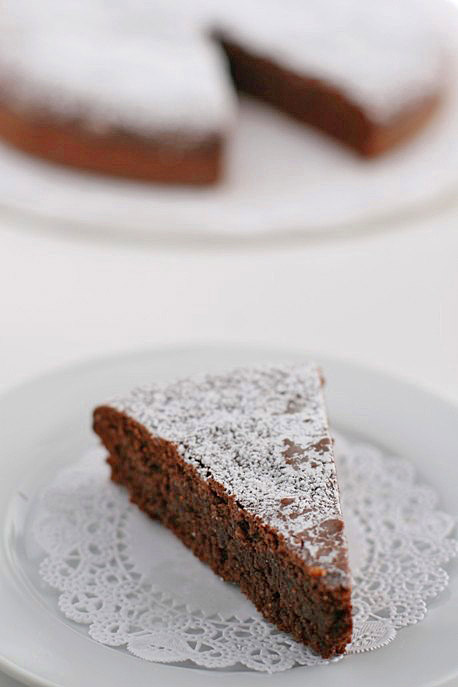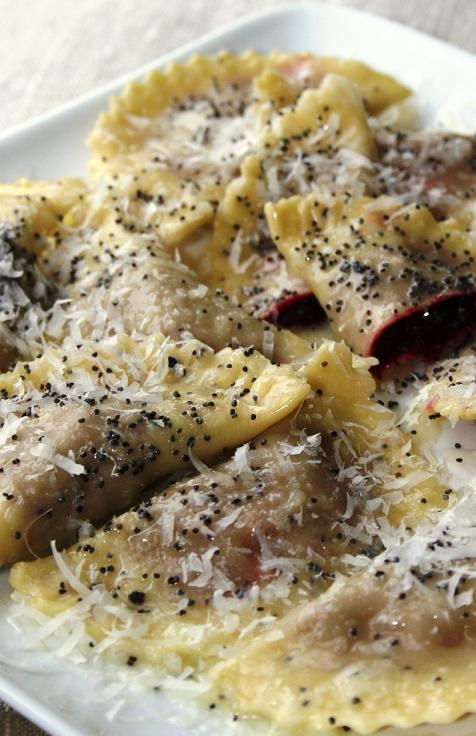
...right? Wrong. It's ZUNI CHICKEN.
For those who live in San Francisco and surrounding,
Zuni Cafe is an institution, one of those places you can go 1,000 times and yet, right when the espresso comes, you already dream of the day you'll afford to go back. It's not only for their menu - because if you think about it, they are famous for a roasted chicken and a salad! - but it's for the passion they put into preparing your food, their love for sustainable, local and seasonal ingredients, for their open kitchen where the chefs don't have ANY single spot of sauce on their uniform, for their rustic bread, so fragrant and crunchy, for the impeccable yet unpretentious waitstaff, for their deep knowledge of the history of all ingredients that go in your dinner - from the type of olive oil mill to the origin of the cocoa beans that go in the chocolate cake; it's for the people that seat at the table next to you, who instantly become your friends just because you exchange opinions on the ricotta gnocchi, it's for the wide windows that look above that theater that has become Market Street, for those stairs that lead to the second floor, and yes, so that you too can say....I've been there.
Since I tried it the first time, I've always wanted to replicate the recipe for Zuni Roasted Chicken at home. I have to admit, though, I am super lazy and the 20+ pages of meticulous description of the process, as they appear in the
Zuni-Bible have always turned me down. Whaaaaaat? If it takes me 4 hours just to read the recipe, it will take me at least 3 days to execute it, and all this for a damned chicken!
That is correct, one of the secrets is indeed to plan in advance and let the bird rest in the fridge all naked - well, almost... - for one to three days, so that the meat can absorb all the aroma from the fresh herbs.
Last week I really set my mind on the project, I printed tons of pages on Zuni's chicken and I totally committed myself. I had also promised my
pot friend Irene (
pot being the pan and not the weed...) that I would confront the chicken one day and I would transfer the recipe overseas. You have to keep your own word, so they say.
The chicken is really excellent. The recipe is very simple after all (despite its lenght...), just follow this simple advice: in order for it to come out just right, you have to select and treat the ingredients with love, Zuni style.
Zuni Roasted Chicken
for 4 people
1 small whole chicken approx. 3 lb.
rosemary, thyme,sage 4 sprigs each
salt, pepper
country style bread, stale 8 oz.
currants 1 tablespoon
pine nuts 2 tablespoons
olive oil, white or Champagne vinegar, red vinegar
garlic 2 or 3 cloves
scallions 4
arugula or frisee a couple of handfuls
Prepare the chicken (at least one day in advance, better if 2 or 3), discarding any fat lump from the inside, rinse it and pat it dry, inside and outside. It is important that the chicken be really dry, because if it stays wet, the water will take too much time steaming before the skin can actually start turning brown.
Using your fingers, make a little pocket under the skin of each of the breasts and thighs, and insert one sprig of each of the herbs. Sprinkle the chicken with salt and pepper, cover with plastic and refrigerate.
For the bread salad, discard all the crust, cut the bread in slices approximately 1" thick and then cut them in big chunks. Brush with olive oil and broil for few minutes, turning them on each side so that the surface turns golden brown.
Make a vinaigrette with 1/4 cup of oil, 1 1/2 tablespoon of white or Champagne vinegar, salt and pepper. Toss the bread with one quarter of it and set aside. You can also prepare this few hours in advance. Moist the currants with 1 tablespoon red vinegar and 1 tablespoon warm water and set aside.
Preheat the oven to 475 (exact temperature will depend on the size of the chicken). Warm the roasting pan by placing it in the oven for about 10 minutes, then place the chicken in it, breast-side up, and put it in the oven. Check it after 20 minutes, if the skin hasn't started browning yet, raise the temperature by about 25 degrees; if instead it is too dark and the fat has started smoking, reduce it accordingly. After about 30 minutes, turn the bird over and let it cook breast-side down for another 10-20 minutes. Turn it again and keep roasting for 5-10 minutes longer (total roasting time will be anywhere between 45 minutes and 1 hour).
In the meantime, slightly toast the pine nuts. In another pan, heat a tablespoon olive oil and briefly saute the slivered garlic and scallions, without letting them turning brown. Add pine nuts, garlic and scallions, and drained currants to the bread salad. Drizzle with one tablespoon of water, taste and eventually add more salt and/or vinegar. Keep it warm (you can also place it in a baking dish and put it in the oven with the chicken during the last 10 minutes).
When the chicken is ready (you can test by checking the juices that are released, they have to be clear and not red), arrange it on a plate and let it cool down. Slash the stretched skin between the thighs and breasts, then tilt the dish and drain the juices over the roasting pan.
Discard the clear fat, add a couple of tablespoons of water to the rest and gently simmer for few minutes. Add the greens to the warm bread, dress with 2 or 3 tablespoons of the chicken juices and the rest of the vinaigrette which you prepared before. Arrange the bread salad nicely on a serving dish.
Cut the chicken in 8 pieces, and set them on the plate with the greens and the bread salad. Serve it while still warm.















